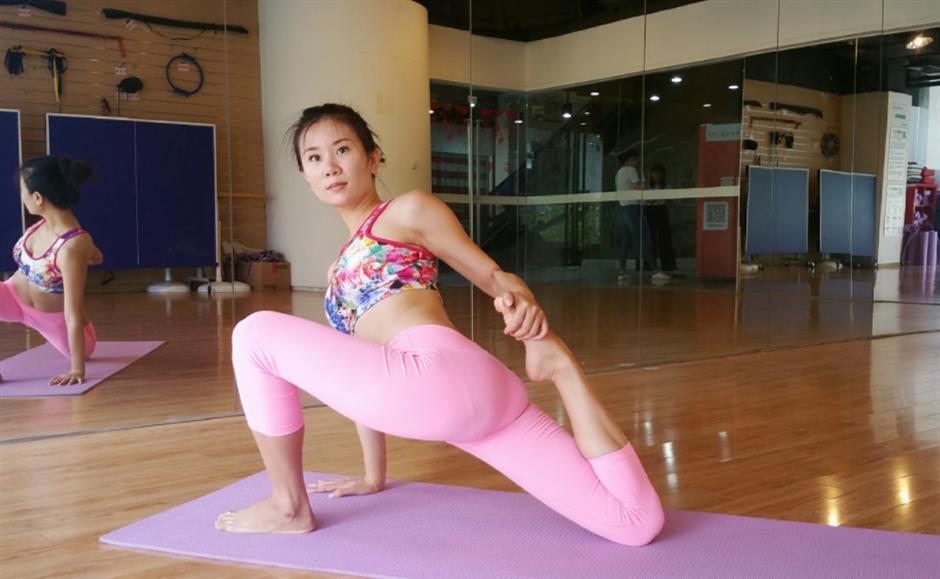Stretching out to stay limber and prevent injury
WE are always told to stretch after exercising, especially with weight-bearing workouts. Actually, every single part of our body deserves a proper stretch after you’ve been active. Doing so will reduce muscle soreness and increase our flexibility.
Most of us are familiar with the therapeutic benefits of stretching. Think about yawning — as we yawn, our arms go up and stretch. Feels good, right? Actually, a proper stretching routine will bring relief to the rest of the body.
According to Lynn Millar, PhD, a physical therapist and professor at Winston-Salem State University in the United States, stretching can keep your hips and hamstrings flexible. If you already have some posture problems or suffer from lower back pain, it may be necessary for you to develop a stretching routine. Stretching regularly can also increase your circulation and calm your mind.
There are many different kinds of stretching; namely, ballistic, dynamic, proprioceptive neuromuscular facilitation (PNF) and static stretching. Ballistic stretching is a kind of rapid bouncing stretch, while dynamic stretching is a walking or movement stretch, that’s done slowly using controlled movements. The former helps to stretch muscles to their limit, while the latter is an ideal stretch to help reduce risk of injuries. PNF is a type of stretch that is meant to relax a specific muscle. Static stretches, however, are to stretch the muscles until a gentle tension is felt. The stretch pose should normally last at least 30 seconds, with no movement or bouncing. Most post-work-out stretches fall into this latter category, which are not recommended for warm-ups.
Generally, females are more flexible than males. But flexibility can be improved through regular stretching.
Tips
1. Always stretch after a work out
Some stretching (think about ballistic stretch) may be done for warm-up to help you increase your mobility and movement, but mostly they should be performed after a work out to prevent your connective tissues from popping when you contract your muscles.
2. Breathe, breathe, breathe
If you’ve ever tried yin yoga, you might notice that the instructor asks you to fall deeper into a pose when you exhale. So deepen your stretch with every exhalation.
3. Never overstretch
Most of us aren’t stretching in order to compete for an Olympic medal; so take your time, go slowly and be gentle as you stretch.
Q&A
Q: How often should I do stretching exercises?
A: Every time after you work out. Otherwise, the American College of Sports Medicine recommends stretching each of the major muscle groups at least two times a week for 60 seconds per exercise.
Q: Is stretching a full-body exercise?
A: Yes, it can be. You can find stretching exercises for just about every muscle.
Q: What equipment do I need?
A: You don’t need any special equipment for most standing stretching poses. A yoga mat would be great for some floor poses. Some stretches will require a foam roller or stretch belt.
Q: Will I get injured when I stretch?
A: If done incorrectly, you may develop an injury. A professional instructor or tutorial will be handy. Some poses may not suit those with certain chronic diseases or conditions. So, if you are in doubt, consult your doctor.

Classroom
1. Calf stretch (hands against wall)
Instruction: Stand about 10cm away from a wall. Lean forward and rest your hands on the wall and stretch out one leg. The front leg can bend a little while keeping your rear leg straight. Try to plant your heel on the ground to maximize the stretch. Keep this pose for 20-30 seconds.
Target: calves
Benefits: Relax muscles and slim calves.
Tips: Remember to stretch both sides. Keep your head, shoulders, back and rear leg in one line.

2.Kneeling quad stretch
Instruction: Take a large step forward with your left leg and bend your left knee. Place your right hand beside your left foot as support. Grab your right foot with your left hand while maintaining your balance with your right hand. Pull your right foot toward your hips. You should feel the deepening stretch in your right thigh. Hold the pose for 30 seconds. Do the opposite side.
Target: quadriceps
Benefits: Relax your thighs.
Tips: Your left knee should not surpass your toes. Place a towel or mat under your right knee to protect it.

3.The forward hang *
Instruction: Spread your feet apart a bit wider than hip-width and slightly bend your knees. Hold your hands straight behind your back. Inhale and straighten your arms to expand your chest. Exhale and bend at your waist. Lift your arms and stretch toward your head. Keep the pose for 15-25 seconds.
Target: shoulders, neck and back
Benefit: The anti-gravity position can help circulation to your head and help you relax your neck and shoulders. The lower back can benefit from the position as well.
Tips: If you have problems with your shoulders or lower back, please check with your doctor to make sure the stretch won’t worsen your condition.

4.Cat stretch *
Instruction: Go down to the mat on all fours as shown in the picture. Your arms should be under your shoulders. Keep your spine neutral and tighten your core. Tuck in your belly and round your spine as you exhale. Try to tuck your neck close to your chest as your hands push against the floor. Drop your head and keep the pose for 15 seconds. Go back to your start position and repeat as needed.
Target: lower back
Benefits: Release tension in your lower back.
Tips: Try your best to round your back just like a cat. This pose is not suitable for those who have lumbar herniated discs and other disc problems.















